Slow Vehicles on Highways: The ban exists only on paper
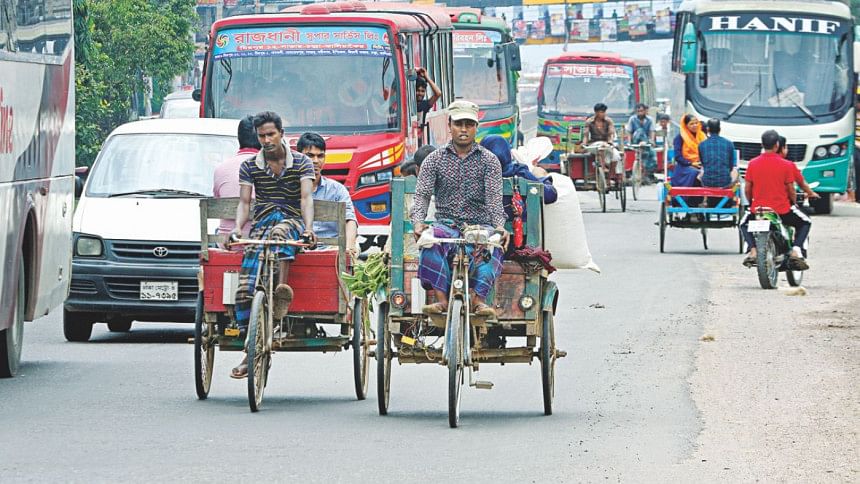
In an utter disregard for multiple government and court orders, locally-made three-wheelers and other low-speed vehicles continue to operate on national highways, causing frequent road crashes.
The plying of slow and fast vehicles side by side remains a major cause of accidents that claim thousands of lives every year. The number of low-speed vehicles increases during Eid rush, causing more fatalities, experts and transport leaders have said.
They enjoy full support from local political leaders, who consider the owners and drivers of these vehicles their vote bank and source of income, transport sector insiders said.
Besides, people living along the highways find these vehicles useful for travelling short distances as they are cheaper and available. This makes the implementation of the ban difficult.
In the meantime, accidents involving these banned vehicles continue.
In the last six days, including the three-day Eid vacation, at least seven road accidents involved such vehicles (Nasiman, Kariman etc), killing 40 people and injuring 40 others, according to The Daily Star reports.
Six of these accidents took place on highways where they are banned.
The issue came to the fore again following a countrywide student protest demanding improved road safety after two college students were killed by a speeding bus in the capital on July 29.
MANY ORDERS, LITTLE RESULTS
About 15 percent of all road accidents involve low-speed vehicles, many of them on the country's 3,790km national highways, according to the Accident Research Institute of Buet.
In most cases, these vehicles do not have registrations and fitness certificates while their drivers do not have licences, said Kazi Md Shifun Newaz, an assistant professor at ARI of Buet.
Given the risk, the Road Transport and Bridges Ministry in July 2015 issued an order, banning three-wheelers and other slow and unfit vehicles on highways. The ban came into effect on August 1.
The very next day, however, transport owners and drivers put up barricades on different highways protesting the ban and clashed with law enforcers, leaving at least 20 people injured and 75 vehicles damaged.
Soon, it was business as usual again.
The road transport ministry also repeatedly asked the Bangladesh Road Transport Authority (BRTA) to take vehicles incapable of travelling at 60km per hour off the highways, but to no avail.
In January last year, the High Court intervened, imposing a total ban on plying of improvised motorised three-wheelers on highways.
The court also asked the home secretary, the BRTA, deputy commissioners and district police chiefs to place their reports on compliance of the directives before it every six months.
Manzill Murshid, a Supreme Court lawyer who was a party to the writ petition, said they were supposed to get copies of the compliance report but did not get any.
Several government probe committees, formed after some fatal road accidents, also recommended full implementation of the ban to reduce road accidents.
But, for most part, all these orders and recommendations remain only on paper.
BUT WHY?
The issue was discussed in the last meeting of the National Road Safety Council in November last year.
At the meeting, Road Transport and Bridges Minister Obaidul Quader talked about the demands by some lawmakers, who want the government to suspend the ban till the national election so they do not lose votes.
"Even though I want it [the ban], local representatives won't let it happen,” a meeting source quoted Quader as saying, as reported in The Daily Star on November 13.
In many cases, local representatives ask the authorities to consider the financial condition of the drivers of such vehicles before implementing the ban, said Khondaker Enayet Ullah, secretary general of Bangladesh Road Transport Owners Association.
“I think such vehicles can operate on feeder roads, and not on national and regional highways compromising road safety,” he told this paper on Saturday.
Police should strictly enforce the ban instead of going after the owners and drivers of buses after each accident, Enayet added.
In a programme last month, Osman Ali, general secretary of Bangladesh Road Transport Workers Federation, said around 20 lakh unregistered vehicles, including locally-made Nasiman and Kariman, are plying the roads and highways across the country.
Local political leaders and upazila chairmen want waiver for such vehicles ahead of the election, he added.
“We could not stop them. Police could not stop Nasiman, Kariman and Bhotbhoti from plying highways because of local lawmakers and upazila chairmen who let them operate for votes,” Osman told the meeting.
A top leader of transport workers in Narail said more than 5,000 three-wheelers operate in his district and local political leaders collect a large sum of money (Tk 100 to Tk 200 daily from each) from the drivers.
Whenever police want to take actions against these vehicles, the local leaders raise the “human issue”, he said. “But the fact is they want to protect their interests -- money and vote bank.”
Taking advantage of the situation, some unscrupulous policemen also collect money from them, he told this correspondent yesterday wishing anonymity.
Shifun Newaz of Buet said that besides strong monitoring, there should be separate lanes for slow vehicles on highways.
Except for a part of N-5 (Hatikumrul-Banpara) and some under-construction highways, no highway has separate lanes for such vehicles, he added.
AUTHORITIES BOAST 'SUCCESS'
Contacted, Nur Mohammad Mazumder, director (enforcement) of the BRTA, said the Highway Police was mainly responsible for implementing the ban. Besides, the BRTA often writes to the deputy commissioners to enhance their mobile court drives to enforce the ban.
Asked why they cannot stop these vehicles, he said, “We are trying our best with our limited workforce. But it is not possible to implement the ban fully unless people become aware [about traffic rules].”
He also blamed people's disregard for traffic law. “This must change.”
The BRTA has 13 posts of executive magistrates to run mobile courts in Dhaka and Chittagong. For years, most of these posts remained vacant, an official said.
Recently, six executive magistrates joined the BRTA, taking their total number to 11, he added.
Asked, Atiqul Islam, deputy inspector general of Highway Police, claimed they had been able to stop “80 percent of such vehicles” from operating on highways.
“Stopping the rest requires awareness and willingness of the people who use those vehicles for commuting,” he told this paper on Saturday.
“Even today [Saturday], we dumped 20 Leguna [human haulier] into water,” he added.
He declined to comment on political leaders' position about the ban.
Golam Faruk, general secretary of Bangladesh Auto Rickshaw-Auto Tempu Paribahan Sramik Federation, denied that they operate any auto-rickshaw or auto-tempu on highways.
He said only battery-run three-wheelers ply the highways as police do not allow auto-rickshaws or similar vehicles powered by CNG or diesel on highways.
He said around 7,00,000 workers were involved in the sector but they were now having a difficult time as the government imposed the ban without making any alternative arrangements.
“When the ban was imposed in 2015, the government assured us that it will make a separate lane on every highway for our vehicles. But it did not do so,” he added.

 For all latest news, follow The Daily Star's Google News channel.
For all latest news, follow The Daily Star's Google News channel. 

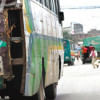
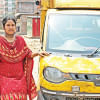
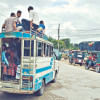

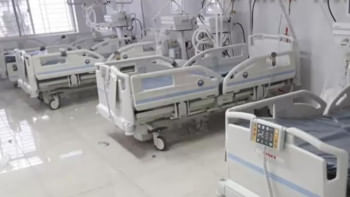
Comments